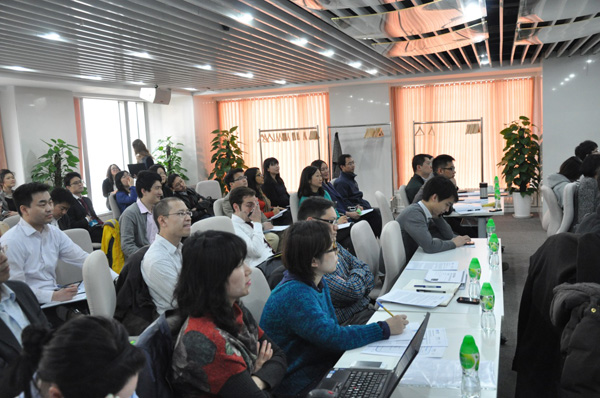With 200 million households belonging to the consuming classes, China’s second to fourth tier cities are arguably the most important consumer segment in the world. But they are tight-fisted. What are the desires, concerns and behavioral trends of Chinese consumers in lower tier markets? What are new forms of consumption driven by e-commerce and social media? Kunal Sinha, Chief Knowledge Officer at Ogilvy & Mather China, sheds light on the influences that have impacted people in lower-tier cities in China on March 14 at CKGSB’s Beijing campus.

Speaking to a group of 60 CKGSB students, business executives and journalists, Sinha explained that this was the third time in the last seven years that he revisited Chinese lower tier markets on behalf of Ogilvy in search of consumer insights and trends. Based on surveys and interviews with 2200 middle-class families in Liaoning, Hunan and Sichuan, Sinha documents these consumer’s beliefs and attitudes in his latest book, “China Beyond – Change & Continuity.”
What did he find? “While there were some constants,” said Sinha, “there is a lot of change that has occurred.” For instance, traditional values in family ties remain strong, but there’s a new type of youth now who do not want to meet their family’s expectations. Moreover, the first wave of reverse migration is occurring, now that people from lower tier cities who have gone to Beijing, Shanghai or Guangzhou are becoming enticed by better job opportunities, cheaper housing and education, and a more relaxed lifestyle in their hometowns.
Moreover, Sinha discovered that food safety, environmental pollution and the rising cost of property are among the main concerns in lower tier cities. Some brands are utilizing this anxiety by marketing their products as “ecologically safe” or “natural”—even though consumers are still doubtful.
“The mobile internet has taken over, and online shopping requires local connectors in lower tier cities,” claims Sinha. Young people and entrepreneurs are using QQ and other social media platforms, instead of phone messaging. They are also comparing prices before they purchase. In terms of brands, consumers in lower tier cities respected Apple, but few of them actually purchased its products. They claimed that other brands, such as Nokia, were “good enough for their needs.” While increasingly more people in lower tier cities enjoyed the convenience of online shopping, many are still unsure of the quality or authenticity of the goods offered. As a result, they have identified an experienced, trusted source within their circle from whom they seek advice.
